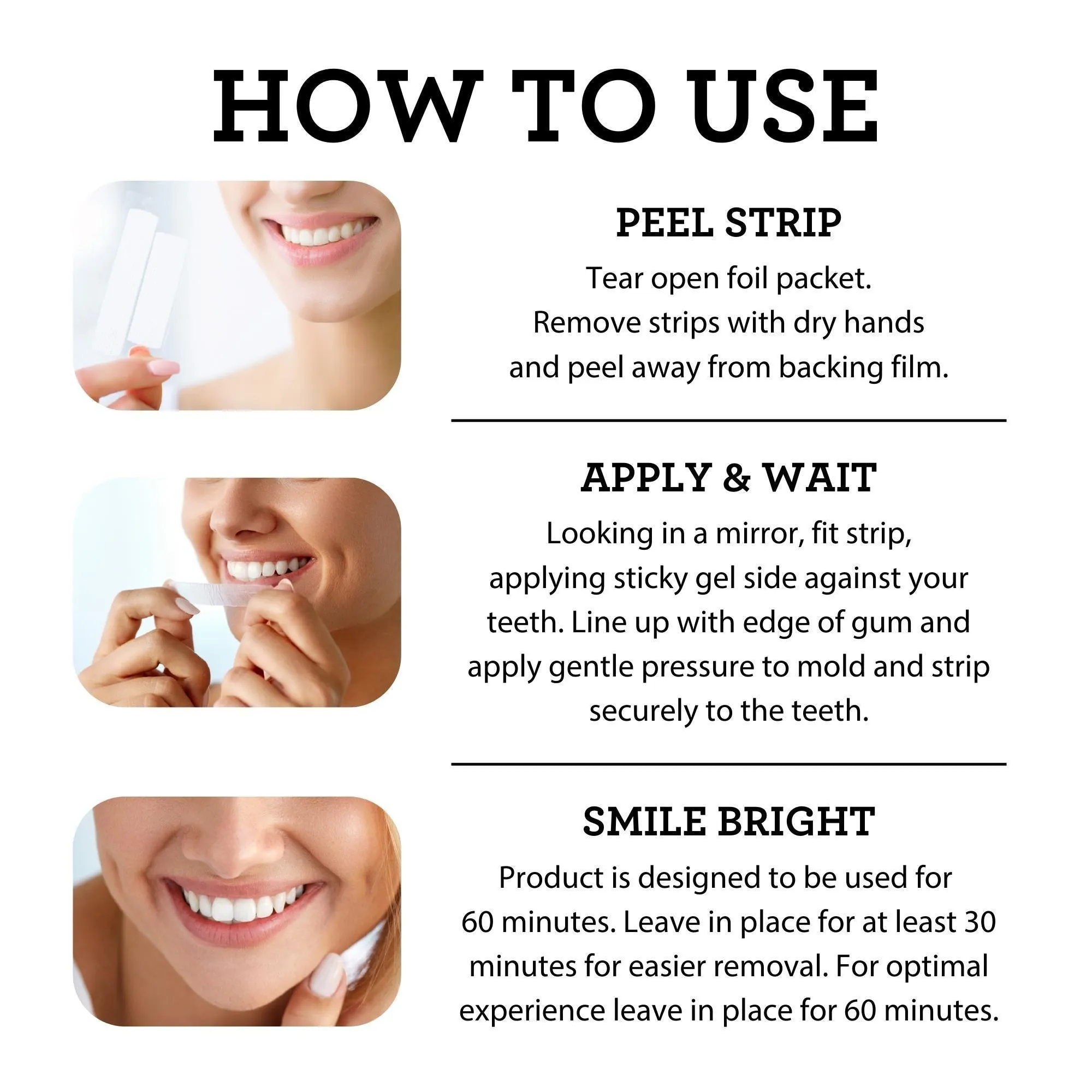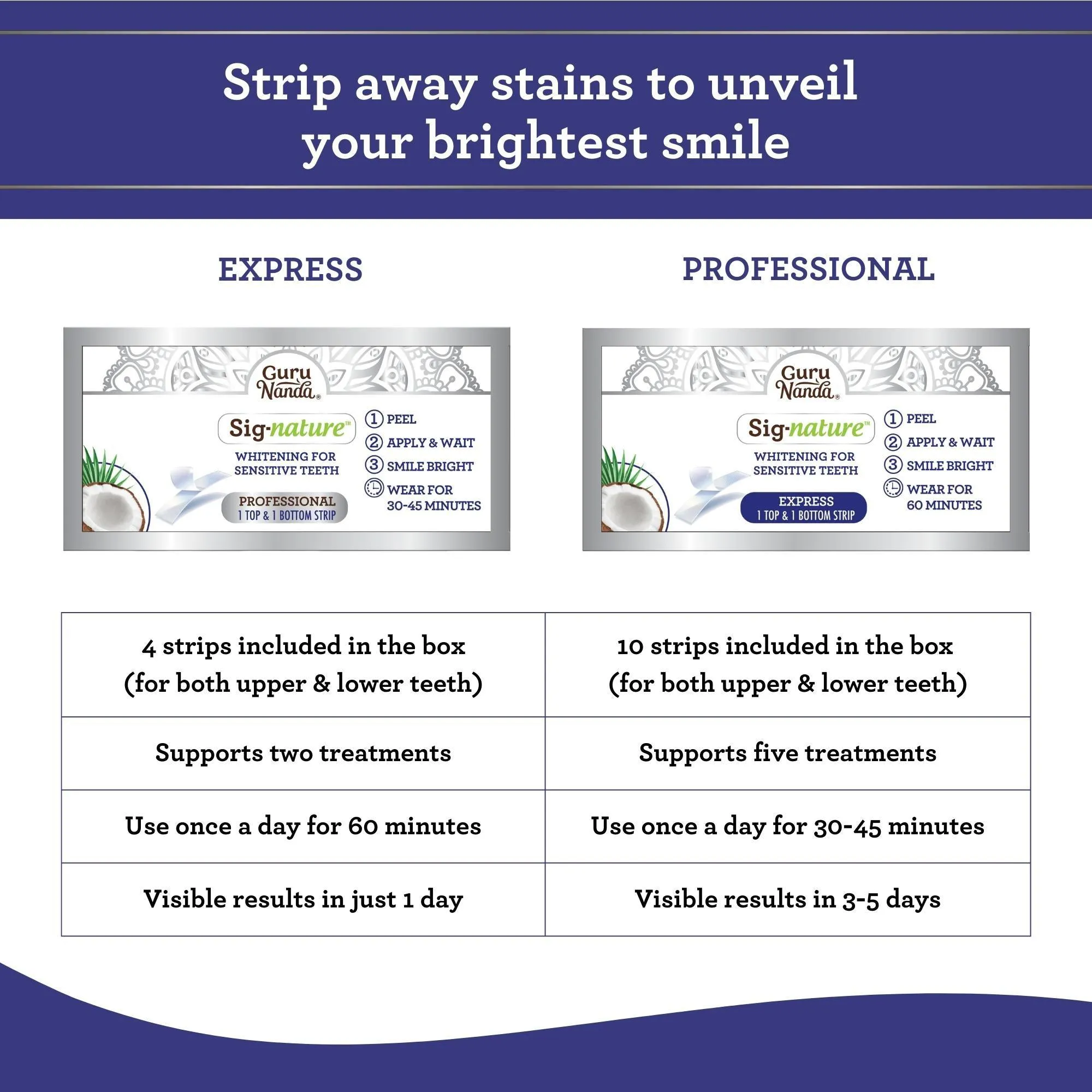Understanding Whitening Strips Daily Use
Whitening strips have revolutionized the way people approach teeth whitening, offering a convenient and accessible method to brighten smiles from the comfort of their homes. But with the ease of use comes the important question of how often these strips should be used safely. The appeal is undeniable the promise of a dazzling smile in a matter of days. However, the active ingredients, primarily hydrogen peroxide or carbamide peroxide, require careful consideration regarding frequency and duration. Overuse can lead to various dental issues, making it crucial to understand the principles of their application. This article delves into the specifics of how often whitening strips can be used daily, exploring safety guidelines, potential risks, and essential tips for ensuring the best and safest teeth-whitening experience.
How Whitening Strips Work
Whitening strips work through a chemical process designed to remove stains and discoloration from the enamel surface of the teeth. The active ingredient, typically hydrogen peroxide or carbamide peroxide, penetrates the enamel. These chemicals break down the stain molecules, effectively lightening the teeth. The concentration of the active ingredient plays a significant role in the efficacy of the strips. Higher concentrations can produce faster results but may also increase the risk of sensitivity or other side effects. When applied, the strips adhere to the teeth, ensuring close contact with the enamel. The peroxide then goes to work, oxidizing the stain particles. Regular use, as directed, gradually lightens the teeth, offering a brighter and more radiant smile. Understanding the process is the first step in using whitening strips responsibly and effectively.
Ingredients to Consider

The key to understanding safe usage lies in the ingredients, specifically the concentrations of active bleaching agents. Most over-the-counter whitening strips use hydrogen peroxide or carbamide peroxide as the active ingredient. Hydrogen peroxide is a stronger agent and usually found in lower concentrations. Carbamide peroxide breaks down into hydrogen peroxide and urea. The concentration of these ingredients varies by product, usually ranging from 6% to 14% for hydrogen peroxide equivalents. In addition to the active ingredients, strips also contain inactive components that help the strips adhere to the teeth and provide structure. These include polymers, adhesives, and flavoring agents. Always check the product label for the specific concentration of the active ingredient. This information is vital for following the recommended usage guidelines and avoiding potential side effects. Knowing what’s in the strips empowers users to make informed decisions and safely achieve their desired results.
Frequency of Use and Safety
The frequency of use is a critical factor in the safety of whitening strips. Most manufacturers recommend using their products once a day for a specific duration, such as 30 minutes. However, this is not a one-size-fits-all guideline, and the safe frequency depends on several factors, including the concentration of the active ingredient, the sensitivity of the teeth, and the overall oral health. Overuse can lead to increased tooth sensitivity, gum irritation, and, in severe cases, damage to the enamel. Adhering to the manufacturer’s instructions is the best starting point. The packaging will outline the recommended usage frequency and the duration of each application. Furthermore, it is essential to monitor the teeth for any signs of adverse reactions. If sensitivity or irritation occurs, the frequency should be reduced or the use of the product discontinued, and consulting with a dentist is always a good idea to get expert advice.
Recommended Daily Usage
Manufacturers typically provide specific instructions on how often whitening strips should be used. These recommendations are based on the concentration of the active ingredient and the product’s formulation. For most over-the-counter strips, the recommended usage is once a day for a period of 30 minutes. This can be different depending on the product, so it’s essential to read and follow the instructions carefully. Some strips are designed for shorter durations, while others may suggest a longer application time. The duration of the entire whitening process also varies, often lasting for one to two weeks. It’s essential not to exceed the recommended frequency or duration, as this can increase the risk of side effects. It is always best to stick to the manufacturer’s guidelines. If in doubt, consult a dentist for personalized advice based on your oral health needs.
Factors Influencing Frequency

Several factors affect how often whitening strips should be used safely. These include the concentration of the active ingredient in the strips, the user’s individual tooth sensitivity, and the overall health of the teeth and gums. Individuals with sensitive teeth may experience discomfort or increased sensitivity even when following the recommended usage. In such cases, using the strips less frequently or for a shorter duration is advisable. The presence of any dental work, such as fillings or crowns, should also be considered. Whitening strips will only affect the natural teeth, so any restorations won’t change color. The condition of the enamel is another important factor. Teeth with thin or damaged enamel may be more susceptible to the effects of the whitening agents. Considering all these factors will help determine the most appropriate frequency of use. Consulting with a dentist before starting any teeth-whitening regimen is always a good idea to get the best advice.
Tooth Sensitivity and Whitening Strips
Tooth sensitivity is a common side effect of using whitening strips. The active ingredients can penetrate the enamel and reach the dentin, the layer beneath the enamel, which contains nerve endings. This can lead to temporary sensitivity to hot and cold temperatures. The degree of sensitivity varies depending on the individual and the concentration of the whitening agent. Those with naturally sensitive teeth may experience more pronounced effects. If sensitivity occurs, it’s often recommended to reduce the frequency of use or to take a break from using the strips altogether. Using toothpaste designed for sensitive teeth, which contains ingredients like potassium nitrate, can help alleviate discomfort. If the sensitivity persists or becomes severe, consulting a dentist is essential. They can assess the situation and recommend appropriate measures, such as fluoride treatments, to strengthen the enamel and reduce sensitivity.
Signs of Overuse
Recognizing the signs of overuse is crucial for preventing potential damage to your teeth and gums. The most common sign is increased tooth sensitivity, which may manifest as sharp pains or discomfort when consuming hot or cold foods and drinks. Gum irritation or inflammation is another indicator. This can appear as redness, swelling, or soreness along the gumline. Overuse may also lead to changes in the enamel, such as increased translucency, which can make the teeth look more transparent. If you experience any of these symptoms, it’s important to stop using the strips and evaluate your oral health. In severe cases, overuse can lead to enamel erosion, which can weaken the teeth and increase the risk of decay. Contacting a dentist for a professional assessment and guidance is the best course of action.
When to Stop Using Whitening Strips

Knowing when to stop using whitening strips is as important as knowing how often to use them. You should stop using the strips if you experience any signs of overuse, such as severe tooth sensitivity, persistent gum irritation, or significant changes in the appearance of your enamel. It’s also important to discontinue use if the product doesn’t seem to be working after the recommended treatment duration. If you’re not seeing any improvement in the whiteness of your teeth, it may be time to consider an alternative approach, such as professional teeth whitening. You should consult with your dentist. They can assess the condition of your teeth, determine the cause of the lack of results, and recommend the best course of action. In all cases, your oral health should be the priority. Don’t hesitate to seek professional advice. It’s essential to ensure the safety of your teeth and gums.
Tips for Safe Whitening Strip Usage
To ensure the safe and effective use of whitening strips, there are several important tips to follow. Always read and follow the manufacturer’s instructions carefully. Adhere to the recommended frequency and duration of use. Before starting, brush your teeth gently, but wait at least 30 minutes after brushing before applying the strips. Avoid brushing immediately after using the strips, as this can increase sensitivity. Use the strips only on your teeth and avoid contact with your gums as much as possible. If sensitivity occurs, reduce the frequency of use or take a break from the treatment. Use toothpaste designed for sensitive teeth to help alleviate discomfort. Consult with your dentist before starting any teeth-whitening regimen, especially if you have existing dental work or sensitivity issues. Be patient and consistent with your application. Maintaining proper oral hygiene practices will help achieve and maintain a bright smile safely.
Consulting a Dentist About Whitening Strips
Consulting with a dentist before using whitening strips is highly recommended. A dentist can assess your oral health, determine if you are a suitable candidate for whitening, and recommend the most appropriate products and usage guidelines. They can evaluate the condition of your teeth and gums, identify any pre-existing issues, and advise on potential risks. Dentists can provide a more personalized plan based on your specific needs and goals. They can also monitor your progress and address any side effects, such as sensitivity. A dentist might recommend professional whitening treatments. Professional treatments are more effective and are performed under controlled conditions. These treatments can yield better and safer results. Regular dental check-ups and cleanings are vital. A dentist can help maintain a healthy and radiant smile safely and effectively.
